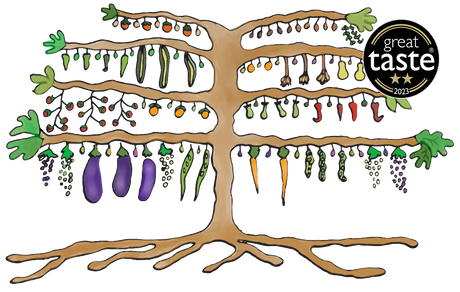Life seems out of sync. Colours are missing. Dawns started to have the lustre of silver dew back in August, long before the usual onset of autumnal freshness.
On one of my ambles I savoured the company of a silver-washed fritillary butterfly (Argynnis paphia), lover of oak woodland and brambles, a big beauty, swift and powerful. But where are all the painted ladies, the red and the white admirals, peacocks and tortoiseshells? Is the early dew a portent of harsh winter? Is the absence of some of the eminent butterflies the consequence of climate?
I always think of my late mother when one of these wonders of nature flickers by. She planted gardens to coax them and would relish their vivacity. It matched her own.
It is a long while, too, since I have seen a large blue butterfly, a flagship for conservation should one be needed. It is needed, of course: We need stories of endangered survivors like these, even if it is a social parasite.
The large blue female lays her eggs on the leaves of wild thyme, of which we have an abundance. Then, at a certain stage, the larvae wander off and will perish unless they are found by a certain species of red ant (Myrmica sabuleti). The ants take the larvae back to their nests where they spend most of their life cycle in safety, feeding on ant larvae. How is this possible? It seems the large blue butterfly has evolved the ability, in larvae form, to mimic the larvae of a queen ant, both chemically and acoustically. The ants are fooled into caring for it.
Countless caterpillars of the rose sawfly (Arge pagana), mustard and green with black spots, are munching their way through the leaves of Maggie’s roses. The female insect saws parallel cuts into fresh shoots of the host plant and the eggs are deposited into them.
As with the large blue butterfly, what is under our noses never ceases to amaze.
Of ants in general, there is no short supply at Mother’s Garden. Irrigation pipes are their super highways through the undergrowth – red, stinger, black, dinky and juggernaut, we have them all. Everywhere the tireless workers trundle back and forth along cleared routes, some carrying home huge pieces of plant debris, to mounds of bare earth perforated with entrances. They may well be able to carry 100 times their body weight, but I wonder why the beefier members of the colony never help the doggedly determined little one carrying the largest load.
Not budging one millimetre was a stubble-chinned Egyptian grasshopper (Anacridium aegyptium ) that had settled on the cottage door, easy to identify because of its striped eyes. I did, however, check if this was another early warning, to discover they are solitary with no tendencies to swarm in Biblical proportions. That’s a relief. This adult was a pretty dull grey, but the tiny young ones (nymphs) can be bright green, or a shade of brown, even orange.
I was doing my rounds, and the next stop was the swimming pool. There is no telling what will appear in there, and I endeavour to check of a morning before holiday guests arise, stretch and consider taking a dip.
After saving several floundering insects I cleaned the filter and removed the less fortunate, which that day included a black and white bee that still has me stumped. While I had it under the magnifying glass beside the barbecue a fearless and menacing ichneumon insect stalked about the marble work surface. What an example of our complex, unfathomable world. Then back in the office, my mind on such small yet immense things, a tiny snail emerged from the underside of my desk and, oblivious, sauntered across my computer keyboard.
With socks hung out to dry on the mountain line we ready ourselves for nut and grape harvests. First, though, we lug the industrial cast iron nutcracker outside and work through nuts unbroken since last year.- almonds, hazels and walnuts.
Lightening storms and downpours have delayed the final ripening of the grapes by a couple of weeks, and the crack of thunder was echoed by the crack of a fat branch on the fig tree giving up under the weight of fruit, leaf and water.
An adult European whip snake coiled in the recess next to the electricity meter to escape the downpour (the meter is far from the house in a brick column at the top of the land) and it would have been wise to stay there. As the clouds moved on a snake-hunting short-toed eagle cruised overhead, harried by two brave small birds which I couldn’t distinguish. There was then a flurry of feathers as our two resident ravens chased away a goshawk.
The wind that carried the storm flustered then abated and the sweet scent of wet wilderness, herb and tree, hung in the golden evening air. Night fell and the stillness of the valley was paced out by the beep-beep-beep calls of the tiny scops owls (Otus scops) as I went to bed, having learned a little more.
For more photographs - see www.facebook.com/mothersgardenoliveoil


0 comments